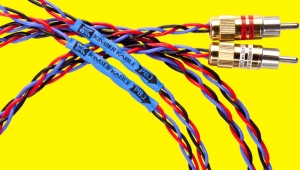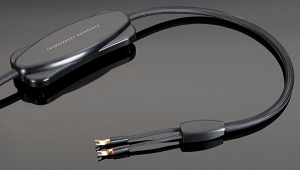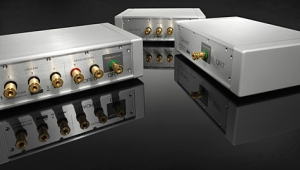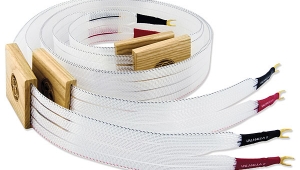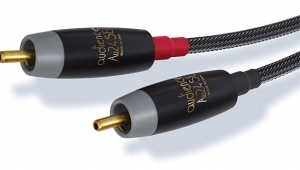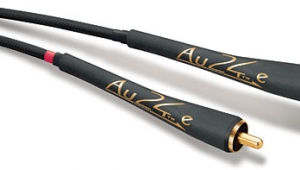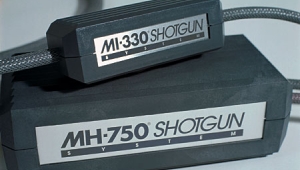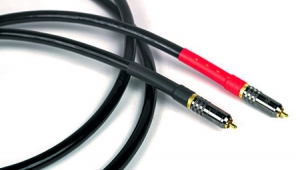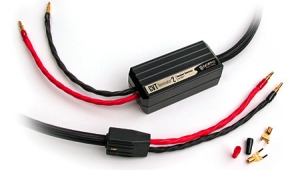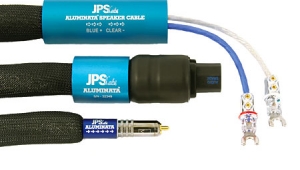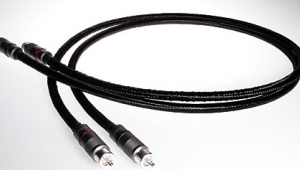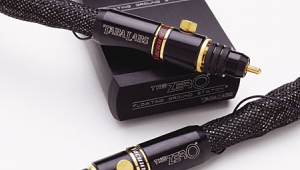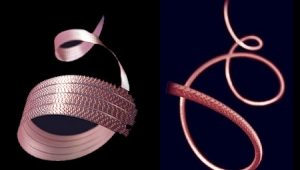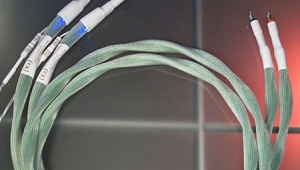| Columns Retired Columns & Blogs |
Nirvana S-X Ltd. interconnect Page 2
Monty Alexander's piano on Never Make Your Move Too Soon was another great example. It wasn't just notes—each note was a sharp, clean hammer blow, followed immediately by a blooming vibrating stream and enveloped a half-heartbeat later by the distinct, building resonance of the piano's soundboard and body.
Perhaps most obviously, the S-X improved dramatically on its predecessor's performance at the frequency extremes. One test I use for high-frequency performance is the cymbals on Never Make Your Move Too Soon, particularly "What a Dif'rence a Day Made." The image should hang tangibly in space as a complex, dimensional mix of bell-like ringing surrounded by an expanding, shimmering metallic cloud. If the system and setup are really clicking, in the middle of all this you can clearly hear the brush moving in a circular pattern against the cymbal.
Nirvana's S-L got perhaps a B on this test, and some of the best cables I've heard, maybe A's. The S-X Ltd. was well into extra credit. Not only were its image and balance right and the circular motions captured faithfully, but it was clear that Frank Gant wasn't just sliding the brush around the cymbal, he was rocking it back and forth, rolling his wrist and varying the pressure against the cymbal. The net effect was that with the S-X, the cymbal had more of the feel I get in a jazz club, where the cymbal's shimmer is part of the atmosphere, something you seem to taste and breathe.
The S-X's performance on the bottom end was similarly excellent—my notes are filled with phrases like "wonderful snap, bounce, and bloom in the bass." Ray Brown's runs at the opening of track three, "As Long As I Live," are good examples of this. Power, precision, detail, pitch definition—all were superb, even at the very bottom of his range. Notes would begin with a clean, fast transient snap, and develop into a rich, warm bloom of harmonics. Another great example was the drum set on Rickie Lee Jones' "Walk Away Renee": The components of each drum's sound—the initial impacts, the characteristic skin tones with their complex mixes of evolving pitches—were startlingly clear with the S-X cables, resulting in an electric, lifelike portrayal.
So How About It?
In the stratospherically costly world of super-high-end cables, it's not really a question of good and bad products, but of how well a designer's goals and execution mesh with a particular listener's system, software, and listening preferences.
Nordost's SPM and Blue Heaven, for example, are great interconnects, and sound a bit faster than the S-X; but in my system, their images and soundstage aren't as coherent and don't seem quite as natural. I've not heard Kimber's Select series, but their KCAG and KCTG are wonderful cables that work well with a wide range of equipment. Compared to the Nirvana, however, they emphasize image edges a bit more, and don't seem to fill them in quite as well. JPS's Superconductor series is good in a lot of ways, but in my systems I could never get them to match the S-X's clarity and openness—they sounded just a bit confused and closed-in.
The cables I compared most to the S-X, and that I found most similar to it, were Synergistic Research's Resolution and Designer's Reference (Discrete Shielding versions). The biggest difference was one of perspective, with the Synergistics a bit more forward and spectacular, the S-X more laid-back. Overall, however, I felt that the Nirvana was the more natural, had the edge in air, openness, and detail, and seemed to match the Synergistic Research's power and impact.
The point of these comparisons isn't to describe a cable shoot-out, but to help establish a context for my observation and assessment of the S-X Ltd. I can't claim to have heard even a large cross-section of the latest and greatest cables, and indeed, most of the cables mentioned above aren't their designers' current best efforts. But all are superb audio cables that I think most listeners would be delighted with—I know that I use them all extensively, and to very good effect.
But if I didn't have the luxury of access to a range of cables and had to pick only one, I'd choose the Nirvana S-X Ltd. Sure, I'd love to hear Synergistic's Active Shielding, or an MIT package optimized for my current system. Maybe they, or some wire I've not even imagined, might change my mind. But for now, for my systems and my listening preferences, the S-X Ltd. is the best I've heard.
Summing Up
Nirvana's new S-X Ltd. is a great interconnect, and unquestionably one of the best available today. It was designed primarily as a low-level interconnect, and its performance is most dramatically revealed in those applications—particularly as a phono cable, where it's nothing short of a revelation. However, it's absolutely superb as a full-system interconnect as well.
The S-X Ltd. was not designed as an upgrade of the S-L, but the comparison can't be avoided. The S-L is an excellent cable, but the S-X is in another league. It retains or improves on the S-L's superb quietness, low distortion, and coherence, and adds class-leading performance in transient reproduction and detail resolution. The result is a cable that doesn't just do some things right, but seems to do everything right.
Nirvana may want to keep quiet about this cable, but I can't. This is one sensational interconnect. Very highly recommended.
- Log in or register to post comments
